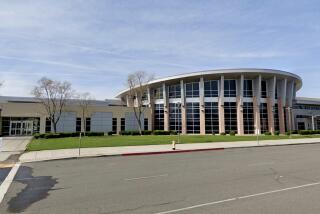Pilot Nearly Canceled Wellstone Flight
- Share via
WASHINGTON — Three hours before the plane crash that killed Minnesota Sen. Paul Wellstone last fall, the pilot nearly canceled the flight because of poor weather, federal investigators disclosed Friday.
“OK, ah, you know what?” pilot Richard Conry told a weather specialist with the Federal Aviation Administration. “I don’t think I’m going to take this flight.” But an hour later, Conry decided to press on, after determining the snowy weather had improved and was within acceptable conditions for flying.
The National Transportation Safety Board has not established a cause for the Oct. 25 crash, which occurred days before the November elections, but the inquiry has raised questions about the flying skills of Conry and copilot Michael Guess, the procedures used to de-ice the plane, and the FAA’s oversight of aviation charter companies, according to investigative reports released Friday.
Eight people died in the accident, including the Democratic senator’s wife and daughter. The popular liberal was in a tight reelection race, and his death may have played a fateful role in putting the Senate back under Republican control.
Three campaign workers onboard the twin-engine turboprop, though critically injured, apparently survived the initial impact but perished in the intense fire that followed, according to NTSB summaries of autopsy reports. All the others were killed instantly.
The King Air A100 took off from the state capital of St. Paul about 9:35 a.m., and crashed less than 50 minutes later as the pilots were attempting to make an instrument landing in Eveleth, Minn. The plane was not equipped with a cockpit voice recorder, so the pilots’ final words are not known.
The weather that day was overcast with light snow, and the conditions created the possibility for ice to form on the plane. Ice on the wings can cause a plane to stall.
Conry, 55, was popular at his workplace, Aviation Charter Inc. But NTSB investigators found that other pilots questioned his flying skills. One pilot described him as “too timid to be a captain,” and others said he often let his copilots do the flying.
Conry had previous troubles, with a 1990 federal conviction for wire fraud. At one stage in his career, he kept two sets of logbooks for his flying hours, with different totals, investigators said.
Two days before the accident, Conry had “smoothly” passed a periodic evaluation under a senior pilot. But in the three-day period before the crash, he had committed several errors.
On an Oct. 22 flight with Wellstone, Conry flipped the wrong switch while assisting with a takeoff climb, according to documents. The airplane suddenly pitched down, throwing Conry into confusion. The copilot, who was flying, quickly figured out the problem and corrected it.
The copilot -- not the same one who was flying the day of the accident -- explained Conry’s mistake to him. Conry responded, “Oh, that could have been pretty bad,” the copilot recalled.
As the passengers got off at the end of the flight, Wellstone, who was known as a nervous flier, jokingly told Conry to “get some sleep.” Nonetheless, Conry was one of Wellstone’s favorite pilots at the charter firm, “because the senator and his staff appreciated the fact that Conry respected his fear of flying,” the NTSB said.
Later that day, Conry kept using the wrong identification code in radio communications with air traffic controllers. The copilot told Conry “he should think about retiring.”
Copilot Guess, 30, was described in NTSB reports as “organized, motivated, eager to learn” but also “unassertive.” Several pilots who had flown with him “expressed concerns about Guess’s flying skills, especially his ability to land the airplane without assistance,” according to the NTSB.
Conry and Guess had flown together four times before the accident.
NTSB investigators also found the charter company had “no clear standardized procedures” for when its pilots should turn on de-icing equipment during flight. After the accident, Aviation Charter instituted a policy that pilots should activate de-icing gear after a half-inch of ice buildup.
Before Wellstone boarded the flight to Eveleth, Conry brought over another pilot to reassure him. The second pilot had just landed in St. Paul after flying through the bad weather. That pilot told Wellstone, “the weather was at minimums, but the pilots could handle it.”
More to Read
Sign up for Essential California
The most important California stories and recommendations in your inbox every morning.
You may occasionally receive promotional content from the Los Angeles Times.










